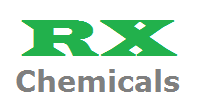

XYLENOL ORANGE TETRASODIUM SALT ACS GRADE
XYLENOL ORANGE TETRASODIUM SALT ACS GRADE excellent quality manufacturer, exporter and supplier. Xylenol orange is an organic reagent, most commonly used as a tetrasodium salt as an indicator for metal titrations. When used for metal titrations, it will appear red in the titrant and become yellow once it reaches its endpoint.
Xylenol Orange tetrasodium salt is used as a photometric reagent and a metal indicator. It is a versatile indicator for EDTA titrations in acidic range. It is a common organic reagent used as an indicator for metal titrations.
Reagent for zinc titration.
We also keeping ready stock of - 5-Sulfosalicylic acid dihydrate, 98%, Potassium nitrate, 99%, Bromocresol Green, Crystal Violet, Hexamethylenetetramine, ACS, 99+% and many more colour indicator..
| C.A.S. No. | 3618-43-7 |
| M.F. | C31H28N2SO13Na4 |
| M.W. | 760.59gm/mole |
Specifications:
|
Also called as 3,3''-Bis[bis(carboxymethyl)aminoethyl] cresol sulfone phtrane sodium salt
RED to Yellow indicator during metal titrations, it will appear red in the titrant and become yellow once it reaches its endpoint.
Molecular Weight 760.59
Form Powder
Melting point 210° dec.
Solubility Soluble in water.
XYLENOL used for metal titrations, it will appear red in the titrant and become yellow once it reaches its endpoint.




